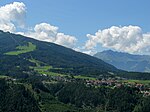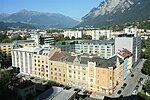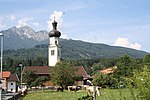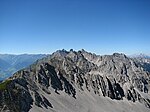Innsbruck Airport
1925 establishments in AustriaAirports established in 1925Airports in AustriaBuildings and structures in InnsbruckInternational airports in Austria ... and 2 more
Transport in InnsbruckTransport in Tyrol (state)

Innsbruck Airport (IATA: INN, ICAO: LOWI), also known locally as Kranebitten Airport, is the largest international airport in Tyrol in western Austria. It is located approximately 4 kilometres (2+1⁄2 mi) from the centre of Innsbruck. The airport, which was opened in 1925, handles regional flights around the Alps, as well as seasonal international traffic to further European destinations. During the winter, activity increases significantly, due to the high number of skiers travelling to the region.
Excerpt from the Wikipedia article Innsbruck Airport (License: CC BY-SA 3.0, Authors, Images).Innsbruck Airport
Harterhofweg, Innsbruck
Geographical coordinates (GPS) Address Website External links Nearby Places Show on map
Geographical coordinates (GPS)
| Latitude | Longitude |
|---|---|
| N 47.260277777778 ° | E 11.343888888889 ° |
Address
Flughafen Innsbruck
Harterhofweg
6020 Innsbruck (Hötting)
Tyrol, Austria
Open on Google Maps









